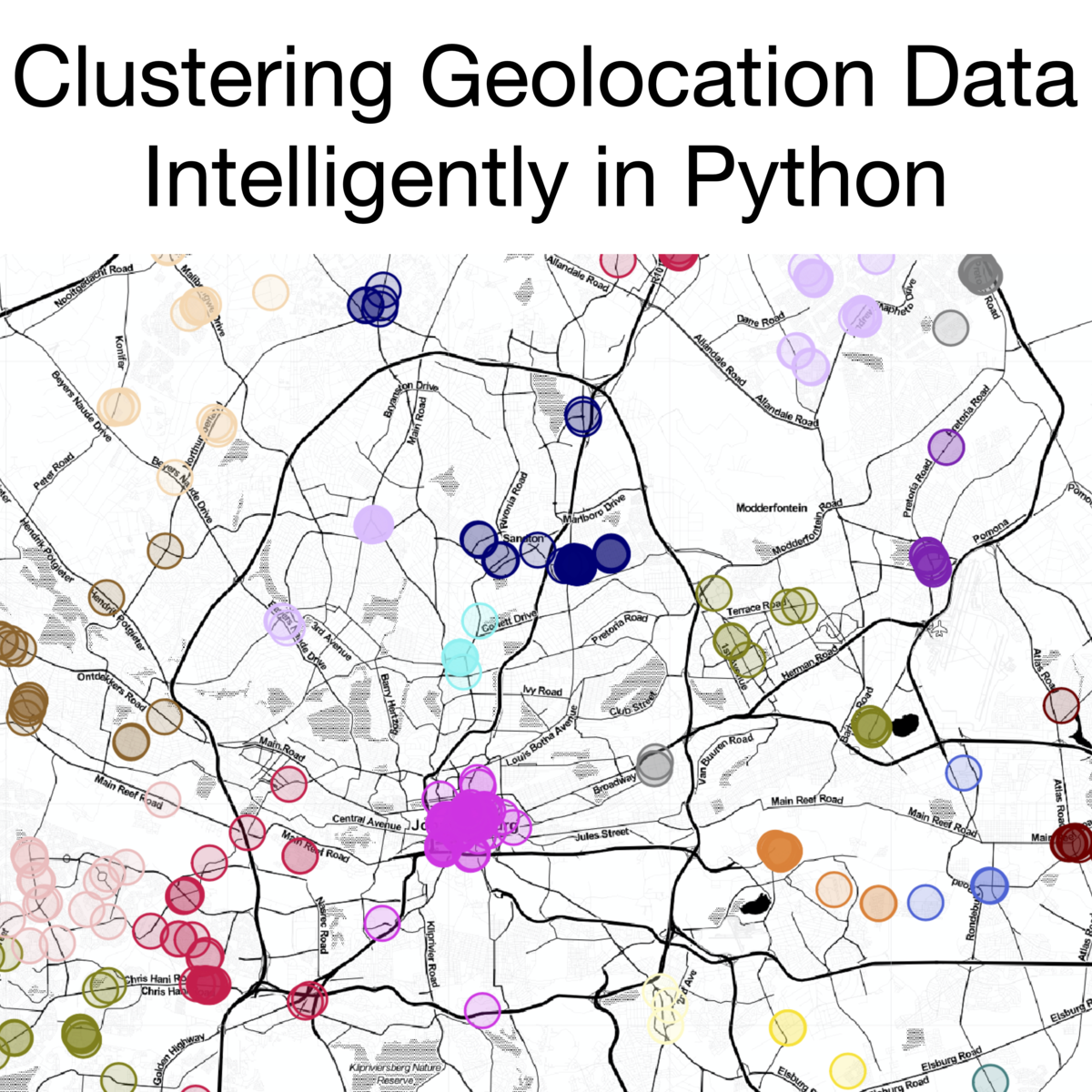
In this 1.5-hour long project, you will learn how to clean and preprocess geolocation data for clustering. You will learn how to export this data into an interactive file that can be better understood for the data. You will learn how to cluster initially with a K-Means approach, before using a more complicated density-based algorithm, DBSCAN. We will discuss how to evaluate these models, and offer improvements to DBSCAN with the introduction of HDBSCAN.
Note: This course works best for learners who are based in the North America region. We’re currently working on providing the same experience in other regions.
What's inside
Syllabus
Good to know
Save this course
Reviews summary
Well-received clustering course
Activities
Review Python basics
Show steps
Review basic Python syntax and data structures to ensure a strong foundation for the course.
Show steps
Review 'Spatial Data Analysis' by Haining
Show steps
Gain a deeper understanding of spatial data analysis techniques and their application to geolocation data.
View
Regression Modelling wih Spatial and Spatial...
on Amazon
Show steps
-
Read Chapter 5: 'Clustering Spatial Data'
-
Review examples and case studies related to geolocation data clustering
Practice clustering algorithms
Show steps
Reinforce understanding of clustering algorithms by implementing them in Python.
Browse courses on
Clustering
Show steps
-
Implement K-Means clustering in Python using scikit-learn
-
Implement DBSCAN clustering in Python using scikit-learn
-
Implement HDBSCAN clustering in Python using hdbscan library
Four other activities
Expand to see all activities and additional details
Show all seven activities
Join a study group
Show steps
Collaborate with peers to discuss course materials, share ideas, and reinforce learning.
Show steps
-
Find or create a study group with other course participants
-
Set regular meeting times and meeting agenda
Attend a data science workshop
Show steps
Enhance understanding of data science concepts and clustering techniques through hands-on workshops.
Browse courses on
Data Science
Show steps
-
Research and identify relevant workshops in your area
-
Register and attend the workshop
Develop a visualization dashboard
Show steps
Create an interactive dashboard to visualize and analyze the clustered geolocation data, strengthening understanding of the results.
Browse courses on
Interactive Visualization
Show steps
-
Select a Python visualization library (e.g., Plotly, Dash)
-
Design the dashboard layout and functionality
-
Implement interactive features (e.g., zoom, filters)
Develop a data analysis report
Show steps
Consolidate and showcase learning by creating a comprehensive data analysis report on a real-world dataset.
Show steps
-
Collect and preprocess the dataset
-
Perform clustering analysis using K-Means and DBSCAN
-
Evaluate the clustering results and provide recommendations
Review Python basics
Show steps
Review basic Python syntax and data structures to ensure a strong foundation for the course.
Show steps
Review 'Spatial Data Analysis' by Haining
Show steps
Gain a deeper understanding of spatial data analysis techniques and their application to geolocation data.
View
Regression Modelling wih Spatial and Spatial...
on Amazon
Show steps
- Read Chapter 5: 'Clustering Spatial Data'
- Review examples and case studies related to geolocation data clustering
Practice clustering algorithms
Show steps
Reinforce understanding of clustering algorithms by implementing them in Python.
Browse courses on
Clustering
Show steps
- Implement K-Means clustering in Python using scikit-learn
- Implement DBSCAN clustering in Python using scikit-learn
- Implement HDBSCAN clustering in Python using hdbscan library
Join a study group
Show steps
Collaborate with peers to discuss course materials, share ideas, and reinforce learning.
Show steps
- Find or create a study group with other course participants
- Set regular meeting times and meeting agenda
Attend a data science workshop
Show steps
Enhance understanding of data science concepts and clustering techniques through hands-on workshops.
Browse courses on
Data Science
Show steps
- Research and identify relevant workshops in your area
- Register and attend the workshop
Develop a visualization dashboard
Show steps
Create an interactive dashboard to visualize and analyze the clustered geolocation data, strengthening understanding of the results.
Browse courses on
Interactive Visualization
Show steps
- Select a Python visualization library (e.g., Plotly, Dash)
- Design the dashboard layout and functionality
- Implement interactive features (e.g., zoom, filters)
Develop a data analysis report
Show steps
Consolidate and showcase learning by creating a comprehensive data analysis report on a real-world dataset.
Show steps
- Collect and preprocess the dataset
- Perform clustering analysis using K-Means and DBSCAN
- Evaluate the clustering results and provide recommendations
Career center
Geospatial Analyst
Urban Planner
Transportation Planner
Data Scientist
GIS Analyst
Cartographer
Spatial Statistician
Business Analyst
Operations Research Analyst
Epidemiologist
Market Researcher
Crime Analyst
Environmental Scientist
Geographer
Geologist
Reading list
Share
Similar courses
OpenCourser helps millions of learners each year. People visit us to learn workspace skills, ace their exams, and nurture their curiosity.
Our extensive catalog contains over 50,000 courses and twice as many books. Browse by search, by topic, or even by career interests. We'll match you to the right resources quickly.
Find this site helpful? Tell a friend about us.
We're supported by our community of learners. When you purchase or subscribe to courses and programs or purchase books, we may earn a commission from our partners.
Your purchases help us maintain our catalog and keep our servers humming without ads.
Thank you for supporting OpenCourser.



